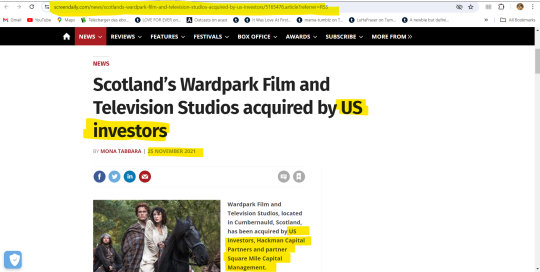#project-based staffing
Explore tagged Tumblr posts
Text
Staff Augmentation Companies in USA Enhancing Productivity
Companies need flexible ways to grow their teams considering how fast and quick the advancements are happening in the world. That’s why more businesses now depend on a staff augmentation firm. These firms provide skilled professionals quickly, helping companies stay productive and efficient. Whether a business is scaling up or handling a new project, staff augmentation offers the support it needs. From startups to large enterprises, the demand for staff augmentation is rising fast across industries. Companies now realize that hiring full-time staff is not always practical. Staff augmentation solves this by offering talent exactly when and where it is needed. Additionally, it lets businesses remain agile in a fast-moving market without compromising on quality or time.
Why Staff Augmentation Companies in USA Are Gaining Popularity
Staff Augmentation Companies in USA are helping businesses grow faster and smarter. These companies provide immediate access to skilled talent. As a result, businesses meet goals faster without long hiring processes.
#staff augmentation services#IT staff augmentation#staff augmentation USA#flexible hiring solutions#tech talent on demand#agile workforce#hire developers USA#reduce hiring costs#project-based staffing#staff augmentation company
0 notes
Text

Discover how contract staffing can enhance your business efficiency by offering a flexible workforce. Learn about the advantages of this model and how Trufynd ensures seamless recruitment for short-term needs.
#Contract staffing#Trufynd#flexible workforce#temporary hiring#project-based staffing#recruitment solutions#cost-effective hiring#workforce scalability#skilled professionals#business growth
0 notes
Text
Read this helpful blog to learn the essential components of creating a strategic budget for staff augmentation services. Discover how to handle market prices, talent requirements, and Truefirms transparency to allocate costs effectively. Examine the subtleties of preserving adaptability, encouraging candid communication, and negotiating fees in order to optimize your budget. Learn the art of optimizing investments for good outcomes in staff augmentation strategies with professional advice on assessment and adaption.
#Staff augmentation companies#Staff augmentation services#Truefirms#Budgeting for IT staffing#Project budget allocation#Skill-based budgeting#Cost estimation for augmented staff#Market rates for staffing services#Transparent pricing in augmentation#Strategic budget planning#staff augmentation company#it staffing agencies#staff augmentation
0 notes
Text
I deleted the ask, but someone wrote one basically saying "why do you post reaction videos to Helluva Boss? Don't you know the show exploits its workers and they're overworked and get burned out?"
And, I mean, I love your energy, person who asked, definitely hold on to those values and speak up about this. But also, I am afraid I might have some bad news for you about literally the whole entire animation industry.
As near as I can make out from the sparse journalistic reporting that's been done on SpindleHorse -- and as a sidebar, please for the love of god read actual reporting about these things and not just callout posts and fandom discourse -- as near as I can make out, SpindleHorse as a studio is neither all that much better nor all that much worse than basically anywhere else in the industry on their level. It seems like it is (or was? Hazbin Hotel seems to be run differently) a studio mostly run by contracting people on a project-by-project basis, which leads to a crapton of turnover, and a huge need for organizing and onboarding, which according to the reporting I have read, the producers and freelancers have struggled to balance and manage properly, which has negatively impacted a number of the workers.
Top that with the usual catty, clique-based backbiting, sniping and poorly managed conflict resolution that's just kinda endemic in creative environments mostly staffed by twentysomethings and stressed out freelancers, and you have the recipe for a workplace where a lot of people are going to have a great time and feel creatively fulfilled, and a lot of people are going to come away feeling justifiably burnt the fuck out and exploited.
All of this is... not especially unusual for the animation industry, or indeed for any creative industry. Which is not to say that it is good, or that it should be allowed to be normal, or that it shouldn't be reported on and criticized (and please for the love of god support unionization efforts because that's the only thing that will actually address these kinds of systemic problems). It's just to say that if those kinds of issues are the line in the sand you draw where you refuse to engage with a studio's output...
Then, for starters, say goodbye to basically all of anime, because the Japanese animation industry is actively in a state of crisis trying to recruit new talent because its working conditions and pay are so astonishingly abysmal. And the horror stories that escape from that industry make the issues at SpindleHorse look like summer camp at times.
But you also have to say goodbye to a lot of American and European animation. Please do not imagine that Disney and its subcontractors, or that Nickelodeon or Warner Bros, are benevolent employers. They exploit their staff brutally and are currently trying to crush the labor value of animation with threats of generative AI being used to replace jobs. But those corporations also have extremely well-funded PR departments and the ability to silence employees with NDAs and threats of blackballing, so you don't get to hear as many of the horror stories as you might from a smaller independent studio that's less able to silence criticism by holding people's careers hostage.
All of this is to say that 1) it's valid and important to have criticism of both large and small-scale animation studios, and to keep the well-being and happiness of the workers higher in your priorities than the output of Products™.
And 2) if you're going to have a principle for what kinds of problems make a studio's output morally untouchable for you, and what kinds of problems you think should make a studio's output untouchable to other people, you do need to apply that principle consistently to the entire industry, and not just to the independent animation studio that happens to be surrounded by the internet's most inflammatory fandom discourse.
If you don't apply that principle consistently, maybe don't send reproachful messages to strangers scolding them for not living up to your standards, and even if you do apply that principle consistently, maybe still don't do that, because it's mostly quite annoying, and doesn't really do anything to support animation workers struggling for better working conditions.
The Animation Guild in the US is currently in the middle of a bargaining process with their industry, and they have a social media press kit as well as relevant talking points on their website which you can use to post in solidarity with the workers. If it comes to a full industry strike, consider donating to their strike funds to help them maintain pressure. Outside of the US, try and find out what (if any) local unions exist for animation workers, and maybe sign up to their mailing lists. They will let you know what kind of support they need from you.
811 notes
·
View notes
Text

Sign of the Day - Boston again… another great overpass banner sign there….
* * * * *
LETTERS FROM AN AMERICAN
June 4, 2025
Heather Cox Richardson
Jun 04, 2025
Just hours after President Donald J. Trump posted on social media yesterday that “[b]ecause of Tariffs, our Economy is BOOMING!” a new report from the Organization for Economic Cooperation and Development (OECD) said the opposite. Founded in 1961, the OECD is a forum in which 38 market-based democracies cooperate to promote sustainable economic growth.
The OECD’s economic outlook reports that economic growth around the globe is slowing because of Trump’s trade war. It projects global growth slowing from 3.3% in 2024 to 2.9% in 2025 and 2026. That economic slowdown is concentrated primarily in the United States, Canada, Mexico, and China.
The OECD predicts that growth in the United States will decline from 2.8% in 2024 to 1.6% in 2025 and 1.5% in 2026.
The nonpartisan Congressional Budget Office (CBO) released two analyses today of Trump’s policies that add more detail to that report. The CBO’s estimate for the effect of Trump’s current tariffs—which are unlikely to stay as they are—is that they will raise inflation and slow economic growth as consumers bear their costs. The CBO says it is hard to anticipate how the tariffs will change purchasing behavior, but it estimates that the tariffs will reduce the deficit by $2.8 trillion over ten years.
Also today, the CBO’s analysis of the Republicans’ “One Big, Beautiful Bill” is that it will add $2.4 trillion to the deficit over the next decade because the $1.2 trillion in spending cuts in the measure do not fully offset the $3.7 trillion in tax cuts for the wealthy and corporations. Republicans have met this CBO score with attacks on the CBO, but its estimate is in keeping with those of a wide range of economists and think tanks.
Taken together, these studies illustrate how Trump’s economic policies are designed to transfer wealth from consumers to the wealthy and corporations. From 1981 to 2021, American policies moved $50 trillion from the bottom 90% of Americans to the top 1%. After Biden stopped that upward transfer, the Trump administration is restarting it again, on steroids.
Just how these policies are affecting Americans is no longer clear, though. Matt Grossman of the Wall Street Journal reported today that economists no longer trust the accuracy of the government’s inflation data. Officials from the Bureau of Labor Statistics, which compiles a huge monthly survey of employment and costs, told economists that staffing shortages and a hiring freeze have forced them to cut back on their research and use less precise methods for figuring out price changes. Grossman reports that the bureau has also cut back on the number of places where it collects data and that the administration has gotten rid of committees of external experts that worked to improve government statistics.
There is more than money at stake in the administration’s policies. The administration's gutting of the government seeks to decimate the modern government that regulates business, provides a basic social safety net, promotes infrastructure, and protects civil rights and to replace it with a government that permits a few wealthy men to rule.
The CBO score for the Republicans’ omnibus bill projects that if it is enacted, 16 million people will lose access to healthcare insurance over the next decade in what is essentially an assault on the Affordable Care Act, also known as Obamacare. The bill also dramatically cuts Supplemental Nutrition Assistance Plan (SNAP) benefits, clean energy credits, aid for student borrowers, benefits for federal workers, and consumer protection services, while requiring the sale of public natural resources.
These cuts continue those the administration has made since Trump took office, many of which fell under the hand of the “Department of Government Efficiency.” But, while billionaire Elon Musk was the figurehead for that group, it appears his main interest was in collecting data. His understudy, Office of Management and Budget director Russell Vought, appears to have determined the direction of the cuts, which did not save money so much as decimate the parts of the government that the authors of Project 2025 wanted to destroy.
Vought was a key author of Project 2025, whose aim is to disrupt and destroy the United States government in order to center a Christian, heteronormative, male-dominated family as the primary element of society. To do so, the plan calls for destroying the administrative state, withdrawing the United States from global affairs, and ending environmental and business regulations.
Yesterday the White House asked Congress to cancel $9.4 billion in already-appropriated spending that the Department of Government Efficiency identified as wasteful, a procedure known as “rescission.” Trump aides say the money funds programs that promote what they consider inappropriate ideologies, including public media networks PBS and NPR; the United States Agency for International Development (USAID), which provides food and basic medical care globally; and PEPFAR, the U.S. President's Emergency Plan for AIDS Relief that was established under President George W. Bush to combat HIV/AIDS in more than 50 countries and is currently credited with saving about 26 million lives.
Vought appeared today before the House Appropriations Committee, where members scolded him for neglecting to provide a budget for the year, which they need to do their jobs. But Vought had plenty to say about the things he is doing. According to ProPublica’s Andy Kroll, he claimed that under Biden “every agency became a tool of the Left.” He said the White House will continue to ask for rescissions, but also noted that, as Project 2025 laid out, he does not believe that the 1974 Impoundment Control Act, which requires the executive branch to spend the money that Congress has appropriated, is constitutional, despite court decisions saying it is.
Representative Rosa DeLauro (D-CT) told Vought: “Be honest, this is never about government efficiency. In fact, an efficient government, a government that capably serves the American people and proves good government is achievable is what you fear the most. You want a government so broken, so dysfunctional, so starved of resources, so full of incompetent political lackeys and bereft of experts and professionals that its departments and agencies cannot feasibly achieve the goals and the missions to which they are lawfully directed. Your goal is privatization, for the biggest companies to have unchecked power, for an economy that does not work for the middle class, for working and vulnerable families. You want the American people to have no one to turn to, but to the billionaires and the corporations this administration has put in charge. Waste, fraud, and abuse are not the targets of this administration. They are your primary objectives.”
The use of the government to impose evangelical beliefs on the country, even at the expense of lives, also appears to be an administration goal. Yesterday, the administration announced it is ending the Biden administration’s 2022 guidance to hospital emergency rooms that accept Medicare—which is virtually all of them—requiring that under the Emergency Medical Treatment and Active Labor Act they must perform an abortion in an emergency if the procedure is necessary to prevent a patient’s organ failure or severe hemorrhaging. The Emergency Medical Treatment and Active Labor Act requires emergency rooms to stabilize patients.
The Trump administration will no longer enforce that policy. Last year, an investigation by the Associated Press found that even when the Biden administration policy was being enforced, dozens of pregnant women, some of whom needed emergency abortions, were turned away from emergency rooms with advice to “let nature take its course.”
Finally tonight, in what seems likely to be an attempt to distract attention from the omnibus bill and all the controversy surrounding it, Trump banned Harvard from hosting foreign students. He also banned nationals from a dozen countries—Afghanistan, Chad, Republic of Congo, Equatorial Guinea, Eritrea, Haiti, Iran, Libya, Myanmar, Somalia, Sudan, and Yemen—from entering the United States, an echo of the travel ban of his first term that threw the country into chaos.
Trump justified his travel ban by citing the attack Sunday in Boulder, Colorado, on peaceful demonstrators marching to support Israeli hostages in Gaza. An Egyptian national who had overstayed a tourist visa hurled Molotov cocktails at the marchers, injuring 15 people.
Egypt is not on the list of countries whose nationals Trump has banned from the United States.
LETTERS FROM AN AMERICAN
HEATHER COX RICHARDSON
#Letters From An American#Heather Cox Richardson#Travel Bans#Project 2025#economic news#CBO#deficit#delusional#Vought
30 notes
·
View notes
Text
John Knefel at MMFA:
President Donald Trump is following through on a policy put forward by Project 2025 that calls for federal law enforcement to investigate, and potentially criminally prosecute, local authorities who refuse to cooperate with his administration’s mass deportation plans. On his first day in office, Trump issued an executive order — and his Department of Justice released a subsequent memo — that put the Project 2025 proposal into practice. Project 2025 is a sprawling transition plan to provide policy and staffing recommendations for the new Trump administration. The effort, organized by The Heritage Foundation in collaboration with more than 100 conservative organizations, drew significant scrutiny during the 2024 election, prompting Trump and longtime adviser Stephen Miller to attempt to distance themselves from it. Since Trump’s win, however, he has stocked his administration with at least 16 contributors to Project 2025’s policybook, Mandate for Leadership, including Miller, who will serve as his deputy chief of staff for policy.
Mandate’s chapter on the Department of Justice is written by Gene Hamilton, who served as the vice president and general counsel of Miller’s America First Legal Foundation. In it, Hamilton — now White House senior counsel — argues that the DOJ should “initiate legal action against local officials—including District Attorneys—who deny American citizens the ‘equal protection of the laws’ by refusing to prosecute criminal offenses in their jurisdictions.” He elaborated that his proposal is “particularly” appropriate for “jurisdictions that refuse to enforce the law against criminals” due to “political considerations” like “immigration status.” According to The Washington Post, America First Legal sent “nearly 250 letters” to local officials in late December similarly threatening that the upcoming Trump administration would “investigate and potentially prosecute state and local officials who don’t cooperate with mass deportation efforts.”
Two of the Trump administration’s new policy announcements largely mirror Hamilton’s language in Mandate. An executive order Trump issued on the first day of his second term targeted so-called “sanctuary jurisdictions” — cities or states that refuse to cooperate with at least some aspects of federal immigration enforcement — to ensure that they do not receive federal funding. The order then commanded the attorney general and secretary of homeland security to “evaluate and undertake any other lawful actions, criminal or civil, that they deem warranted based on any such jurisdiction’s practices that interfere with the enforcement of Federal law.” Trump’s EO is one of ten executive actions he took on his first day in office intended to radically limit both legal and unauthorized immigration.
Two days after Trump’s day one blitz, media outlets reported on a memo issued to the DOJ by acting Deputy Attorney General Emil Bove that referenced Trump’s executive order and expanded on it. “Federal law prohibits state and local actors from resisting, obstructing, and otherwise failing to comply with lawful immigration-related commands and requests,” the memo stated. It added that the DOJ “shall investigate incidents involving any such misconduct for potential prosecution,” threatening that the investigations could result in charges of conspiracy to defraud the United States.
Project 2025, the radical right-wing policy book by The Heritage Foundation, proposed targeting local officials who didn’t bow down to 47’s mass deportations lunacy. As expected, Tyrant-In-Chief Trump is following through on that satanic promise.
#Immigration#Project 2025#Mass Deportations#Thomas Homan#Stephen Miller#America First Legal#Gene Hamilton#The Heritage Foundation#Emil Bove
41 notes
·
View notes
Text
The New Yorker Daily: How Bad Is It?
The White House recently proposed the smallest NASA budget since the dawn of human spaceflight, after adjusting for inflation. We spoke with David W. Brown, who has written about space for the magazine since 2020, and with an official at the European Space Agency.
What does this mean for the future of America’s space program?
The proposal “doesn’t cut to the bone—it just lobs off limbs,” Brown told us. It would axe countless satellites and instruments; decommission solar-system probes that are already under way; and finish OSIRIS-APEX, a program that aims to help protect Earth from a catastrophic asteroid strike.
A Trump Administration press release said that the proposal “accelerates human space exploration of the Moon and Mars,” in part by investing a billion dollars in missions that aim to land astronauts on Mars—a Trump campaign promise and a priority of his former adviser Elon Musk. But next to the astronomical costs of such missions, Brown noted, “That’s like tipping your waiter a dime.”
The proposal has also rattled NASA’s partners. “It’s a disaster,” an E.S.A. official told us. “Basically, if you go through it, it means that there’s no E.S.A.–NASA collaboration left.” Joint projects that Europe has already funded may wither. One U.S.-funded instrument that could be terminated is MODIS, a satellite-based climate sensor that collects, among other information, fire data for the entire world. “We’re really concerned,” the official said. “And we don’t have an alternative.”
Congress could counter with its own budget proposal for the space agency, as it has in past Administrations. But Brown pointed out that some of NASA’s current leaders are already implementing deep staffing cuts that the Trump Administration has ordered. As an engineer at the agency recently texted Brown, “NASA is jumping up to the sword of Damocles before it has a chance to drop.”
22 notes
·
View notes
Text
Some Enclave (Fallout 3) Headcanons:
- James was formerly an Enclave scientist. He deserted, later meeting Catherine and helping build Project Purity with the help of his education/technology from the Enclave.
(In my LW’s story, him and Autumn are brothers. James is either a middle name or a name he chose later on in life, because there’s no way their parents named one kid Augustus and went with James for the next one.)
- Furthermore, the mystery drug that Colonel Autumn injected himself with to survive the radiation at Project Purity was created using the same technology that made the purifier itself.
- Raven Rock is much bigger than we see during the game, with a rail network connecting different sections. Most of it is uninhabited, due to the Enclave being much more short staffed than they actually let on. It also includes secret tunnels, not on any official maps and with no cameras installed. Sort of like a panic room. President Eden is unaware of their existence.
- Colonel Autumn is so damned tired all the time. The reason you can’t cooperate with the Enclave is because if he had to deal with President Eden and a 19-year-old at the same time, he would spontaneously combust.
- If it wasn’t for the above fact, he would’ve adopted the Lone Wanderer the moment he met them at Raven Rock. While they were telling him to go fuck himself and attempting to stab him through the force field and everything. I mean, who sends a teenager to run their incredibly dangerous errands? What was the Brotherhood thinking?
- He didn’t know the Lone Wanderer was there at the Purifier, since he had his back turned. He didn’t even know James had a kid. A part of him, buried deep within, regrets that. But he’s used to pushing his own feelings to the side and doing what his job demands of him, that’s what he’s always done.
- The Enclave keeps baseball alive. Raven Rock has multiple teams, and they get very competitive. Autumn has had to send a base-wide memo reminding the baseball teams to stop sabotaging each other with pranks.
- Autumn really didn’t want to give his brief talk on Enclave Radio. You can hear it in his voice. He swears the troops are laughing at him about it.
#fallout#fallout 3#fallout 3 enclave#fallout enclave#enclave#fallout headcanons#fallout 3 headcanons#headcanons#Raven rock#colonel Autumn#Augustus autumn#president Eden#John Henry Eden
21 notes
·
View notes
Text
A word on Wardpark/Cumbernauld Studios
@docsama left a comment, on S's birthday, under one of my posts and I promised her an answer with more information, as soon as I got the time. Anyway, here goes - and @docsama, sorry for the delay:

Question is: who owns the Wardpark Film and Television Studios?
The answer was quick to find, in the not-so-old specialized media:


The story begins in 2013, with an ambitious Scottish entrepreneur, Terry Thomson - this guy (courtesy of The Herald, https://www.heraldscotland.com/news/15984820.analysis-three-projects-pipeline-help-productions-make-big-picture/):

He is the owner of the Thomson Pettie Group, based in Carluke (https://www.thomsonpettie.com/about-us), which has nothing to do with cinema:

You've read that right: they are 'manufacturers of fabricated metal parts and assemblies', primarily for the national automotive industry. Yet, in 2013, Mr. Thomson agreed to rent what he described as 'a dormant industrial property' - a warehouse, to be exact - to Sony, in order to host the filming and production of OL. Thus, he became the CEO of a newly created entity, The Wardpark Film and Television Studios (https://www.hackmancapital.com/scotlands-largest-most-iconic-film-studio-acquired-by-hackman-capital-partners-and-square-mile-capital/).
By 2017, Wardpark was doing so well, that a big expansion plan was announced, with the direct support of the Scottish Government, which invested £4 million via Scottish Enterprise, its business support, advice and funding agency:

And then, in November 2021, the little engine that could was sold to those two big US investors, Hackman Capital Partners (HCP) and Square Mile Capital Management LLC (now globally rebranded as Affinius Capital). In this montage, Hackman Capital Partners brought its own confirmed film studios and media management expertise...

... while Square Mile most probably funded a sizeable portion of the acquisition, simply because this is what they do best:

Perhaps an interesting detail: HCP owns and manages both the Culver City based Sony Pictures Animation Studios' Campus and the legendary Culver Studios, now rebranded by Amazon:

Back to Scotland, Wardpark Studio's sale made just about everyone happy. Mr. Thomson kept his CEO job and look who was more than thrilled about the juicy transaction:

Currently, the studio is operated by HCP's subsidiary, The MBS Group:

That means that MBS probably manages just about everything, as far as daily management is concerned, from business operations, staffing and/or property management, to lighting and grip, trucks and generators' fleet, expendables and props. Unless I could see a contract and have a precise idea, I can just enumerate all the services they offer.
At no point in time did S and C own anything of those studios. As for the Executive Producer part, that is another discussion entirely. I could be coaxed to write something about it, if you really want to know why Those Two are EPs and what does that really, really mean - because once again, I have seen and read a LOT of bullshit in here, especially in the Desperate Housewives Disgruntled Tumblrettes' corner.
Thank you for asking. It was fun to research and write and I hope it brought more clarity to you.
99 notes
·
View notes
Text

Discover how TruFynd’s contractual hiring services offer businesses flexible and cost-effective staffing solutions. From project-based needs to contract-to-hire roles, we help you address workforce demands with efficiency and precision.
#Contractual hiring#contract staffing#contract-to-hire#TruFynd staffing solutions#flexible workforce#scalable hiring#cost-effective recruitment#project-based hiring
0 notes
Text
How Staff Augmentation Supports Business Growth

In today’s competitive landscape, businesses must adapt to dynamic challenges. Staff augmentation provides the agility needed to grow efficiently by accessing skilled professionals for short-term or project-based assignments. This model helps businesses reduce costs and eliminate the complexities of traditional hiring processes. By augmenting their teams with external talent, companies can address workload spikes, meet tight deadlines, and explore new opportunities without overburdening internal staff. It also enables businesses to leverage diverse skill sets and innovative perspectives from professionals experienced in their fields. Staff augmentation is particularly beneficial for startups and SMEs looking to scale operations quickly without committing to permanent hires. This approach fosters sustainable growth, empowering businesses to focus on innovation and achieving long-term goals.
Read more:
What is Staff Augmentation? — Meaning and Use Cases 2024
#Flexible workforce solutions#Talent gap filling#Temporary staffing model#Project-based hiring#IT staff augmentation#Scalable workforce solutions#Specialized talent acquisition
0 notes
Text
The momentum of Cannon’s black nationalism also translated into progress at city hall. By the early 1970s, black politicians relied on Cannon’s leadership to maintain relationships with black voters in the black community and to develop deeper relationships with voters in other neighborhoods of color, newly organized through CMHCs and CBOs and staffed with community workers trained in mental health. The political value of this new city-wide political machine accounts for the ascension of Tom Bradley to Mayor of Los Angeles as the nation’s first black mayor of a majority white city in 1973. In turn, Bradley supported all of Cannon’s major projects through Model Cities and municipal funding as well as similar race-based CBOs and CMHCs throughout the city.
Bradley’s election served as proof of the power of black respectability politics to convince both white and black voters that blackness could be associated with leadership, ability, and power. It also solidified a new political regime that was anti-police brutality, but not anti-police. As a former LAPD patrolman critical of its racist policing, Bradley tried as mayor to achieve progressive policing reform, but had limited power to control the department.72 He saw the client-focused services of CMHCs and CBOs as an alternative humanitarian approach to produce urban change that did not require racist policing tactics. That is, similar to the LAPD, Cannon’s programs accepted any racialized subject outside middle-class community norms as troublesome to society but, unlike the police, sought to achieve social order through self-help and reform programs, rather than incarceration and commitment.
In this way, Bradley’s and Cannon’s overlapping concerns over street crime, domestic violence, and family dysfunction in black communities reveal they both viewed crime and community disorder as products of poor individual choices rather than manifestations of larger structural forces. In their opinion, the greatest obstacle to racial progress was not racial capitalism, but socially constructed prejudice that required greater racial representation of people of color in positions of power to combat it. Bradley privileged support for Cannon and his brand of black culture because, as Daniel Widener argues, “African American culture became one site where elected officials [like him] could demonstrate affinity with and support for black residents of South Los Angeles” and because it celebrated race without necessarily supporting “an insurgent form of urban politics.”73
Bradley’s relationship with Cannon became increasingly important in light of the growing strength of the Black Panther Party, founded in Oakland in 1966 and started in Los Angeles in 1968. Unlike Pan-Africanists focused on representation and normalizing black culture, the Panthers argued for a complete re-organization of race and capitalism. They also demonstrated willingness to work with organizations that represented figures Cannon sought to contain and eradicate. For example, the Panthers worked with single mothers of the National Welfare Rights Organization to develop free health clinics and community survival programs.74 According to Jared Leighton, the Panthers also worked with Gay Liberation organizations that shared the Panther’s critiques of the psychiatric community and the police as both being the black and gay communities’ “biggest oppressors.”75 Although Alondra Nelson argues the Panthers’ free clinic programs demonstrate they were not anti-medicine, she suggests they were anti-psychiatry in similar to ways that AJ Lewis argues gay liberation groups embraced “mad politics” of the anti-psychiatry movement, which “repudiat[ed] ‘normalcy’ and its institutions of enforcement” and “challenged the normalization of sanity and politicized social deviance.”76
The Panthers’ program highlighted the contradictions of black representational politics by exposing the limits of its power to advance change among the black working class. According to Widener, Bradley’s focus on building alliances with transnational capital and upholding affirmative action in public employment created a “major economic boost” for black college-degreed Angelenos, which resulted in “an economic bifurcation of black Los Angeles, with the emergence of a new middle class standing in sharp contrast to the experiences of a black working class beset by economic restructuring, the rise of the crack cocaine epidemic, and the militarized policing of the LAPD.”77 The emergence of a strong black middle class alongside a growing “black underclass” and the normality of race campaigns launched by Cannon meant that, by 1969, the strong reliance psychiatrists had in using race as an index for class and other social factors (as Wertham and Mosse, for instance, believed) was quickly becoming muddled by these new class distinctions.78
The need for a psychiatric approach to race to navigate, on one hand, the existence of “normal” black middle class individuals and, on the other, the continuing troublesome presence of a black “underclass” mired in poverty, crime, and mental illness prompted UCLA to recruit talent able to chart new directions for race-based psychiatry. By 1969, UCLA sought to secure leadership that strengthened its historically strong commitment to race-based community mental health theory, but its medical school leaders also attempted to take advantage of underexplored psychiatric methods and theories found in psychopharmacology and neuroscience. These new pathways later reinforced new black “community norms” established in the late 1960s to police poor people of color with even more menacing rationale.
Nic John Ramos, Pathologizing the Crisis: Psychiatry, Policing, and Racial Liberalism in the Long Community Mental Health Movement. Journal of the History of Medicine and Allied Sciences, Volume 74, Issue 1, January 2019, 57–84
15 notes
·
View notes
Text
working on a novel where one of the fantasy "kingdoms" (not the most accurate term but close enough) is very solarpunk-y and I'm both very excited and very nervous about it, I love worldbuilding but adapting it to the mechanics of this world is gonna be complicated at best 😅
any writers here have advice for how to handle that? it's an avian society of winged people, so their design assumes flight but accounts for people on foot as well - lots of wall doorways and balcony platforms for people to land on, alongside ladders and elevators and stairs and so on. they've had time to make pretty extensive changes, and they have an analouge to electricity that's freely available, so I am including more "modern" features like trains and long-distance communication (the rest of the world is still operating like pre-electric reality for various reasons)
more infodumping under the cut because I want to:
the short version of their situation is that they did a reverse atlantis and yanked their whole kingdom into the sky, then spent the next few hundred years becoming less monarchical and more democratic/socialist-ish in how they operate
there's no money and no real government - people still work, but it's in short shifts with well-staffed groups and a worker co-op organization style for anything not run by families or individuals. schedules differ, but there's essentially three different types residents fall into: the morning folks that sleep early, the afternoon folks, and the nighttime folks that stay up late and sleep through the day. it's like a 24-hour system - some people work first and relax or run errands later in their 'block', and others take care of personal business or plans before they head in to work. issues are handled on a stratified basis; personal problems are settled by individuals, community problems by the community, and extensive problems by the 'kingdom' as a whole. what's left of their government is the people who coordinate resource movement and keep communications between the different districts, including their last 'queen' (who at this point is just the chill lady who makes sure all the big projects are going smoothly)
there's four major distinctions of bird people: one based on "common" birds like sparrows and finches; one based on tropical birds like parrots and birds of paradise; one based on hunting birds like falcons and hawks; and one not really based on a type of bird but on what their distinction is known for compared to the others (ravens, owls, and other symbolically or scientifically 'intelligent' birds). the sparrow group is a significant portion of their artisans and craftspeople, the tropical group is largely artists and creatives, the hawk group is known for wing care and maintenance (athletic types, basically), and the owl group tend to gravitate towards the sciences or join engineering projects. each district has a concentration of one of these groups, which influences its general culture, but no group is considered better or worse than another, and people move around and through districts quite often.
the tropical district is, unsurprisingly, a hub for artists throughout the land, and most buildings are splashed with multiple paintings or murals; they hold annual art festivals where new artists get to showcase their work and established ones challenge themselves to big, complicated projects (the vibe is much less competition and much more Art Fight - they love collaborating and supporting each other)
the athletic district has plenty of flight courses and workout areas, but also a lot of clinics and bird PT facilities; they're not really gym rats, just very enthusiastic about physical health and taking care of your body and wings however you need to. if you've seen that one post about the marathon(?) that gives an award specifically to the person that's Dead Last for making it at all, that's a good example of their attitude.
that's all I have time to write about now but I can add the other two if people want?
7 notes
·
View notes
Text
[..] American archaeologists face a diminished, uncertain future. Over the last few months, government support for archaeological research, preservation and museums has been largely scaled back. Archaeology and cultural heritage staff have been fired, federal agencies engaged in field and collections work have been gutted, and projects have been mothballed or canceled in all three major employment sectors: academic, private and government.
Christopher D. Dore, president of the archaeology society, said the financial cost in lost potential and opportunities was incalculable. “It is ironic that on the eve of the 250th anniversary of the United States, we are choosing to sacrifice our history and the nonrenewable archaeological sites that provide that history,” he said.
Dr. Dore feared that insufficient staffing would undermine the ability to properly supervise and control public use of federal areas. Looting, visitor damage, erosion and even permitted uses such as cattle grazing are grave threats to site protection and tribal lands. “Archaeological resources are not renewable,” Dr. Dore said. “Unlike some natural resources, they don’t grow back. Once destroyed, sites and the information they hold are gone forever.”
[...] On Jan. 16, under the lame-duck Biden administration, the National Endowment for the Humanities awarded a $350,000 grant to Archaeology Southwest, a nonprofit based in Tucson, Ariz. The money was earmarked for an initiative to document plant and animal species in the Sonoran Desert, particularly those culturally important to local tribes.
Six weeks later, with President Trump in charge, the agency clawed back the funds on the grounds that the initiative “no longer effectuates the agency’s needs and priorities.” It was the first time in Archaeology Southwest’s 35-year history that a federal granting department had reneged on an award. “The real termination is of trust in the federal government to follow its own laws and regulations,” said Steve Nash, the organization’s president and chief executive.
[...] Archaeologists are staring down a future that may offer limited or no federal funding for safeguarding museum holdings. Tribal leaders have expressed unease about the fate of human remains and objects of cultural patrimony stored in government facilities. “These collections are one of our most powerful tools for training young people to be interested in the world around us, and connect our present to the past and the future,” Dr. Taylor said. In some national parks, leases on buildings that house archives and collections have already been allowed to lapse. [...]
11 notes
·
View notes
Text
Early Martian history
After the formal announcement of the creation of the Soviet Venusian People's Republic on 7 November 2067, it's fair to say there was no one on Earth who wasn't shocked. Not only had two countries entirely disappeared from the map, their leadership had put themselves and the populations they rule over into orbit of a different planet. The ensuing border conflicts on Earth resulted in a huge shakeup of global power dynamics. Today, however, we will not be focusing on that.
The billionaires, libertarians, CEOs and other such leeches of the world were faced with a sudden realization; two isolationist dictatorships filled with famine and corruption had beat them to their goal. A few people had landed on Mars in the 2040s, sure, but there was still no permanent habitation. In fact, nobody had been there for over a decade. A majority of the world's space companies immediately got to planning the permanent colonisation of Mars. Some on their own, some working together, but overall united for a common goal: Ego. No, not money. Colonising Mars is by no means profitable. The egos of the companies' leaderships had been hurt and they were not going to take it sitting down.
Already during the very next transfer window several companies made their first shots at the project. No crews yet, but landers with robots and future bases. After that, more robots and bases, then the first permanent astronauts.
Billionaires came a few years later, on comparatively luxurious spacecraft collectively named the Arks. Some are thought to have killed themselves either on the long journey there or on their stay simply due to the sheer psychological stresses they had not prepared for, though historians are not sure as the companies involved covered these cases up. Still some persevered and asked their followers to join them for extremely cheap prices, just a few million USD (United States Dollar, a popular currency at the time) per person. Newer, less luxurious, less expensive, less safe spacecraft were filled with dozens of fans of these billionaires sending themselves to what they saw, according to recovered diaries, either as an escape or salvation from the troubles of Earth or as a chance to reach the same "success" they saw the billionaires had achieved. Some of these spacecraft ended up in terrible accidents on reentry, and a good few saw someone onboard go insane and kill everyone, but still an estimated 94% of the original ~200000 made it to their new home rock.
Of course, a Mars trip was never going to cost just a few million. After a decade of getting both capitalism-minded fanatics and eventually even regular people to join them on their surprisingly nice miniature agriculture- and Earth distance work-based societies, the billionaires (and the children of the ones who'd died) suddenly (although not unexpectedly to anyone paying attention) announced independence from Earth and declared Mars a taxless, lawless haven for the rich. The deliveries to the planet after this point were mostly guns, factories and mining equipment. Factories and mines were staffed by the lower classes while guns were used to make sure they didn't get any ideas.
Cities began being built, both under the ground and above it. Trade with Earth's nations continued, and though Mars didn't have anything of real value to offer yet, most of the billionaires (or, again, their children) were still at the helms of influential companies on Earth. Turns our interplanetary deliveries are easy enough to order from them when you're the one at the top.
The billionaires' net worths were comparable to those of small nations, so they could pay off some legislators, judges and whatnot who were threatening their companies. Still, they were operating on a time limit. That's what the factories and mines were for: building industry, hopefully fast enough to begin trade with Earth's countries before they got sick of them.
And indeed it worked; just 8 years after their announcement of independence, the first payloads were sent to earth. Raw materials, technically traded at a huge deficit for Mars, but in practice assuring Earth's superpowers' support for them in the long term. At this point some either quit or even dissolved their Earth companies altogether, seeing them more as a risk to themselves than anything useful. Instead they founded giant multi-layered conglomerates based largely on trade within Mars, though of course the Earthen trade was important as well. These 'Founders' planned to make their reign eternal through establishing dynasties.
As the human-developed areas grew and grew with the Founders' power becoming more and more absolute, the layer cake of each Martian corporate conglomerate structured itself to be akin to feudalism.

Every layer provided a benefit to the one above and below it, though of course workers were kept in check mostly by threats of violence.
Each conglomerate also did trade with the others, either with services such as security, regular trade goods the others simply didn't have or with workers. Sometimes trade deals also included factories and mines. Companies being traded was rare but happened a few times.

Martian trade with Earth was also vital for these power structures. The Founders' power within them was based entirely on them having access to Earth's currencies and communications arrays they could destroy should anyone attempt to usurp them.

The conglomerates forming into shapes like this may have been an accident at first, but after some of the Founders recognized these developments and got an idea. Feudalism, for all its faults, lasted a very very long time. Aiming for as long of a rule as possible made it seem like a great choice.
Of course, we all now know it didn't last very long.
8 notes
·
View notes
Text
Dan Pfeiffer at The Message Box:
The generally accepted — and oft-repeated — narrative about Trump is that he is a cult-leader who can bend the Republican base to his will. On issues like free trade and foreign policy, he broke with long-standing Republican orthodoxy and faced no repercussions. He attacked Republican stalwarts like the Bush family and John McCain. Not only was there no blowback, Trump also made these folks' personas non-grata in the Republican Party. Whether it’s indictments, his sexual assaults, or his dalliances and dinner dates with Nazis, Trump could force the Republican Party to go along. The GOP is Trump’s party and what he says goes. Trump is a man accountable to no one. This has benefited him politically and brought in folks who hate politics and distrust institutions. But that image became fuzzy last week when Donald Trump bent to the will of anti-abortion extremists in a stunning flip-flop on abortion that tells us everything we need to know about Donald Trump. He poses an existential threat to reproductive freedom for tens of millions of Americans.
The Flip-Flop to End All Flip-Flops
I have written about Trump’s abortion flip-flop a couple of times in the last week, so if you are a regular reader of Message Box, please feel free to skip ahead. If not… In an interview with Dasha Burns of NBC News, Trump implied that he would vote for the amendment on the Florida ballot guaranteeing access to abortion and effectively overturning the state’s six-week ban. Trump is now a Florida resident and many are unsure how he plans to vote on the amendment. Trump’s stated position on abortion is that it's up to the states. For crass political reasons he has been critical of Florida’s extreme ban. A day ago, Trump flip-flopped, telling Fox News that he would vote NO on the amendment. So what happened in the subsequent twenty-four hours?
Well, the evangelical community and anti-abortion activists went ballistic. They blew up the phone lines to Mar-a-Lago or wherever Trump was laying his head last week. They argued that Trump’s new stance would depress turnout from his base. Ever since Dobbs, Trump cannot get it right. He watched his slate of hand-picked candidates get mowed down in 2022 and he sees the polls showing large majorities oppose the overturning of Roe v. Wade and the sorts of state and national abortion bans of which Republicans have long dreamed. Trump thought his “leave it to the states” policy would help. It didn’t. Floating the idea of voting for the abortion amendment was another desperate effort to get on the right side of the issue that has cost Republicans nearly every election. This time, Trump crossed a line. The anti-abortion faction of the party told him to reverse course and he did so immediately. One of the core tenets of Trump’s political philosophy is to never, under any circumstances admit to wrongdoing. Heck, Trump doubled, tripled, and quadrupled down on defending and dining with Nazis. So the fact that Trump changed course so quickly and with so little resistance on abortion is quite notable.
[...] These folks will be calling the shots in a Trump Administration. They will influence policy and staffing decisions and that should scare the shit out of anyone who cares about reproductive freedom. Dobbs was the beginning — not the end — of the Far Right’s efforts.
Donald Trump being made to cry “uncle” and say that he is voting no on Florida Amendment 4 after being heavily criticized by anti-abortion commentators when he stated that he would initially consider voting in favor of Amendment 4 is proof that the anti-abortion extremists still call the shots in the GOP.
#Donald Trump#Abortion#Florida Amendment 4#2024 Presidential Election#2024 Ballot Measures and Referendums#2024 Elections#Florida#Anti Abortion Extremism#Project 2025#Comstock Act#Reproductive Justice
30 notes
·
View notes